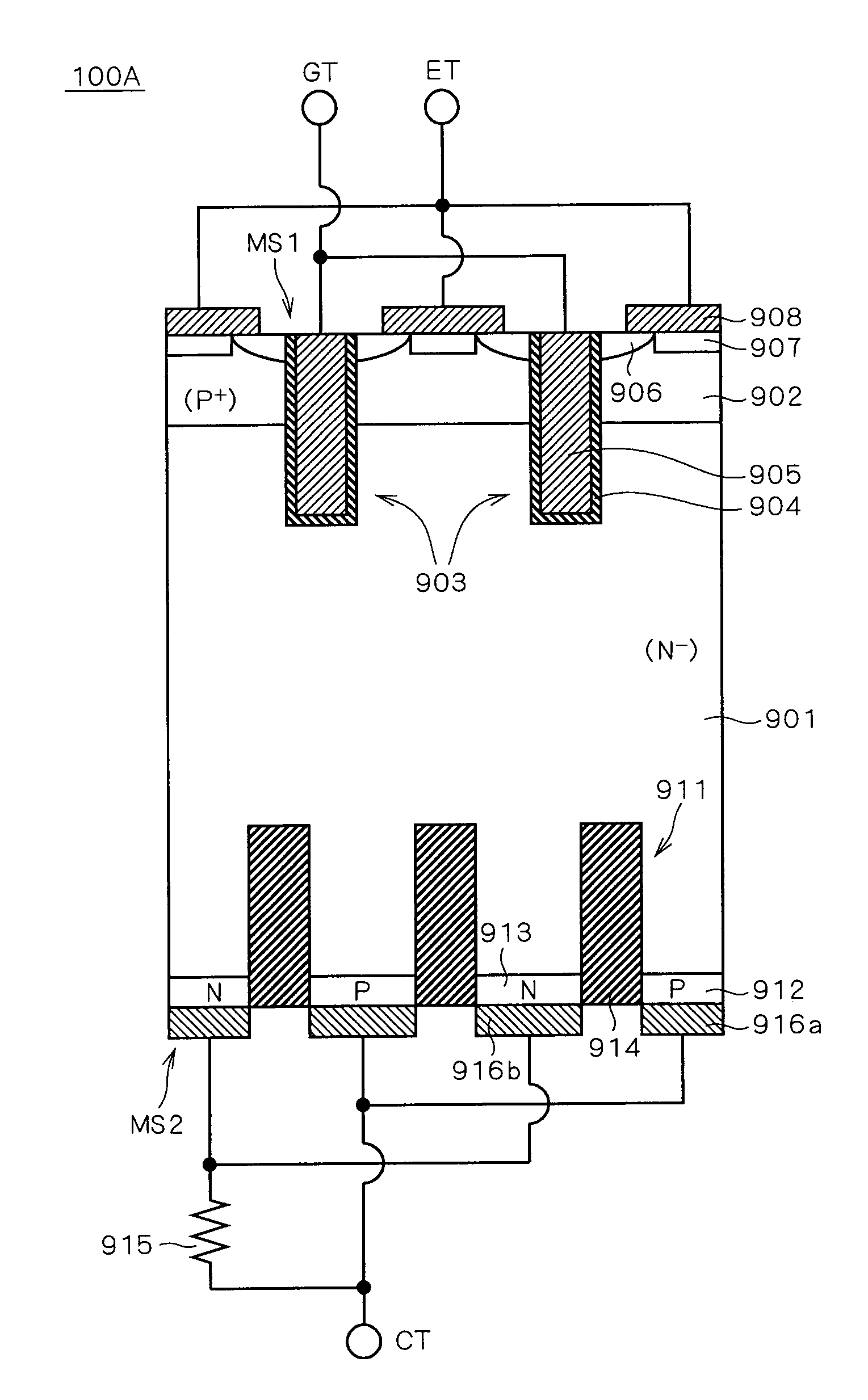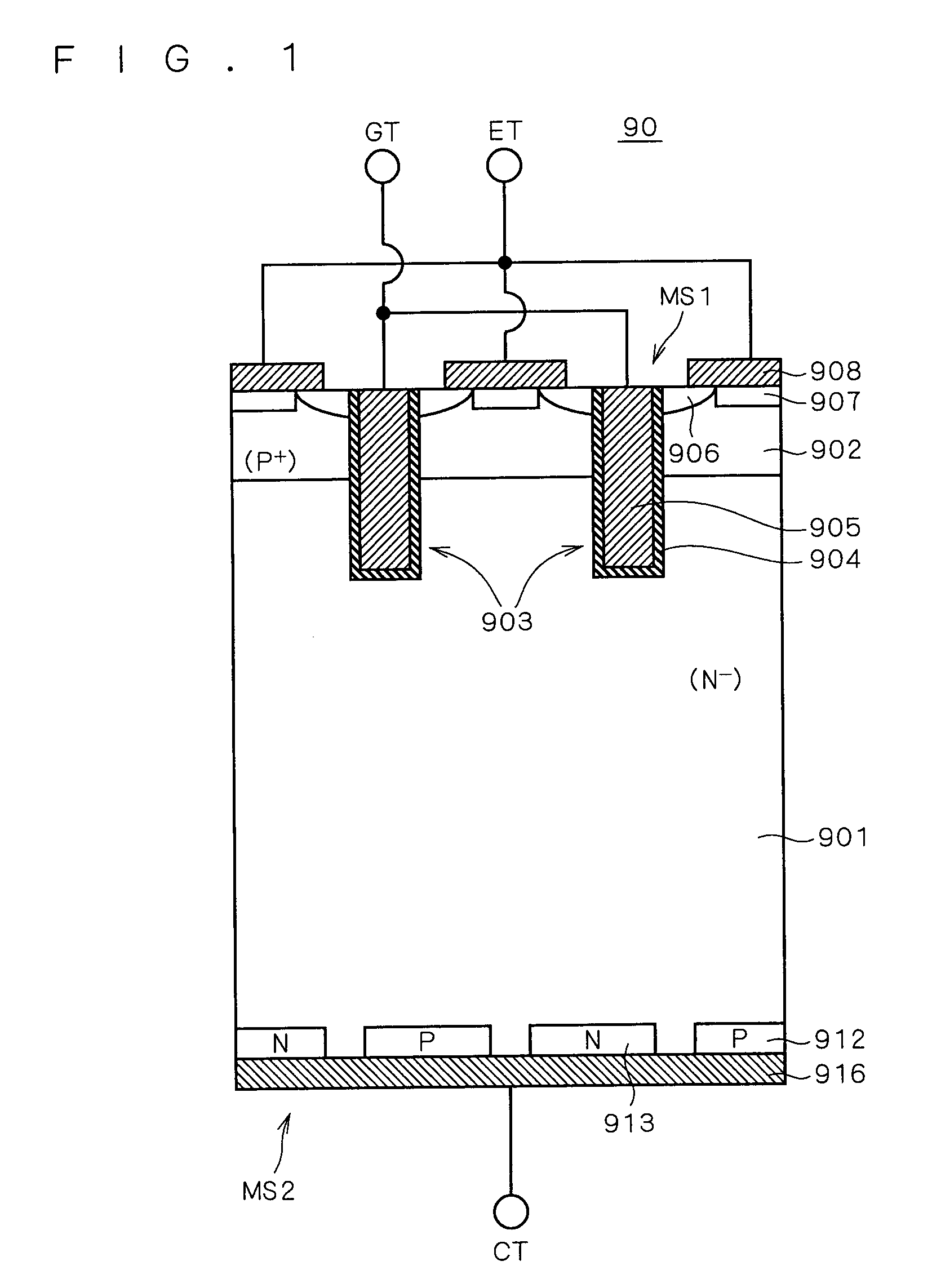Semiconductor device and manufacturing method thereof
a technology of semiconductors and semiconductors, applied in the direction of semiconductor devices, basic electric elements, electrical equipment, etc., can solve the problem of inability to obtain desirable electric characteristics, and achieve the effect of desirable electric characteristics
- Summary
- Abstract
- Description
- Claims
- Application Information
AI Technical Summary
Benefits of technology
Problems solved by technology
Method used
Image
Examples
Embodiment Construction
[0031]Prior to describing an embodiment according to the present invention, description is given as to how the technical idea of the present invention has been developed with reference to FIGS. 1 through 3.
[0032]FIG. 1 is a section view illustrating a basic structure of a semiconductor device 90 intended to solve the problem with the conventional semiconductor device.
[0033]In the configuration of the semiconductor device 90 shown in FIG. 1, a P type semiconductor region 902 is formed entirely across in a surface of a first main surface MS1 of a semiconductor substrate 901 that is an N type substrate having a high specific resistance (N−).
[0034]Then, two trenches 903 are provided penetrating the P type semiconductor region 902 from the first main surface MS1 and reaching inside the semiconductor substrate 901. Inner walls of trenches 903 are covered with gate insulating films 904. Further, conductive materials fill inside trenches 903 covered with the gate insulating films 904 to for...
PUM
 Login to View More
Login to View More Abstract
Description
Claims
Application Information
 Login to View More
Login to View More - R&D
- Intellectual Property
- Life Sciences
- Materials
- Tech Scout
- Unparalleled Data Quality
- Higher Quality Content
- 60% Fewer Hallucinations
Browse by: Latest US Patents, China's latest patents, Technical Efficacy Thesaurus, Application Domain, Technology Topic, Popular Technical Reports.
© 2025 PatSnap. All rights reserved.Legal|Privacy policy|Modern Slavery Act Transparency Statement|Sitemap|About US| Contact US: help@patsnap.com



